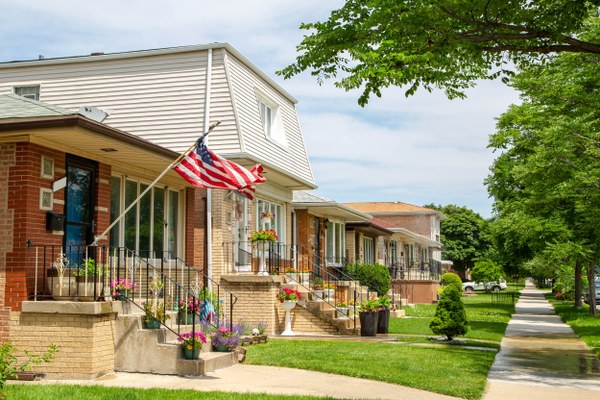Clearing in Chicago
Clearing, a vibrant community in the Southwest side of Chicago, has a rich history and a unique character that sets it apart from the city’s other areas. This neighborhood, part of the 64th community area of the bustling city, is home to a diverse population and a thriving industrial district. Adding to its charm and appeal is the Chicago Midway International Airport, a significant portion of which is housed within Clearing.
The Early Years
The early settlers of Clearing were primarily Dutch and German farmers who made their livelihood in the mid-nineteenth century. The area was also home to the notable U.S. Senator and Chicago Mayor, Long John Wentworth. Wentworth, a significant landowner in the area, built his residence in 1868 at the intersection of the present-day 55th and Harlem. His vast landholdings included areas that would later become part of Clearing, Garfield Ridge, and Summit.

The Origin of The Name “Clearing”
Clearing derives its name from a proposed railway-switching yard. In 1888, Stickney, the president of the Chicago Great Western Railroad, laid out a plan for a one-mile circle, known as “Stickney’s Circle”. This was aimed at enabling workers to load and unload goods efficiently, thereby avoiding the rail congestion in the downtown area. However, this ambitious plan did not take off, leading to its rechristening as “Stickney’s Folly.”
Incorporation and Growth
Despite the initial setbacks, the area saw steady progress. In 1909, George Hill set up a hardware store, one of the first businesses in Clearing. By 1912, the residents voted to incorporate Clearing as a village. The Chicago Transfer and Clearing Company connected a freight car switching hub with 18 industries in 1915, leading to Clearing’s annexation to the city of Chicago.
Industrialization and the Arrival of Midway Airport
The early 20th century witnessed the growth of the Clearing Industrial District. From a mere 18 industries in 1915, the district expanded to over 90 by 1928. Around the same time, land in Clearing and Garfield Ridge owned by the Chicago Public Schools was leased to the city for the construction of an airport on the Southwest Side. In 1927, Mayor William Hale Thompson dedicated the Chicago Municipal Airport. By 1949, the airport was renamed Midway Airport, in honor of the victories at Midway Island during World War II.
The Postwar Boom and Decline
The period following World War II saw Clearing experience a residential and economic boom. The population grew from 6,068 in 1940 to a peak of 24,911 in 1970. By 1970, some 300 firms had located in what is now known as the Bedford-Clearing Industrial District. However, the economic recession from 1974 to 1984 saw over half of these companies leave Clearing for other locations, reducing the number of firms to 175 and reducing the number of workers from 50,000 to just over 19,000.
Resurgence
Since 1985, with the resurgence of Midway Airport, some stability has returned to Clearing. The neighborhood continues to be a vital part of Chicago’s landscape, contributing to its economic and cultural diversity.
Demographics
Clearing’s population as per the 2020 census was 24,473. The demographics of the neighborhood are diverse, with a significant number of White, Black, Hispanic, and Asian residents.
Religion
The Roman Catholic Archdiocese of Chicago operates several Catholic churches in Clearing. On July 1, 2020, St. Rene Parish and St. Symphorosa Parish merged.
Clearing, Chicago, is a neighborhood that embodies the spirit of the city — vibrant, diverse, and resilient. From its early days as a farming community to its current status as a bustling industrial district and transportation hub, Clearing’s journey has been marked by growth, challenges, and renewal. Today, it stands as a testament to Chicago’s relentless spirit and commitment to progress.


